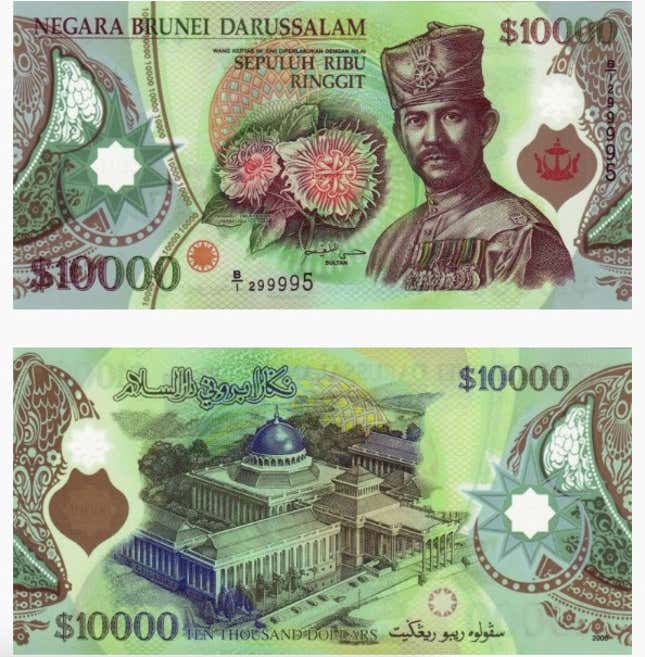According to its most feverish supporters, bitcoin will eventually replace traditional legal tender like the dollar. Tim Draper, the crypto millionaire and venture capitalist, told Forbes that fiat currency usage will be a laughable anachronism in five years. But for now at least, with the bitcoin price down by more than half from its peak, the original crypto asset has about the same market value as the largest banknote in circulation.
That bill is Brunei’s B$10,000 note, which is worth about $7,482, roughly the same as bitcoin these days, at around $7,500. The legal tender—featuring a portrait of Sultan Hassanal Bolkiah—was issued in 2006. Such large denominations aren’t convenient for a typical wallet, but could be useful during an emergency or during wartime, as well as for illicit purposes. The Brunei dollar’s value is legally par with the currency of Singapore, which has its own S$10,000 bill (though it is no longer issued).

The tiny nation of Brunei is pretty much the opposite of crypto believers’ decentralized ideal. Bolkiah, one of the richest people in the world, is among the few remaining absolute monarchs and one of the longest reigning, according to the BBC. Thanks to vast oil and gas fields, which account for nearly the entire economy, its gross domestic product per capita is among the highest in the world. In 2014, the country with 423,000 residents adopted strict Islamic sharia law that received heavy criticism from international rights groups.
Brunei’s B$10,000 note stands out at a time when high-denomination bills are being retired. Latvia’s 500-lat note was worth about $982 as it was phased out when the Baltic nation became the euro zone’s 13th member in 2013. The euro zone is getting rid of its €500 bill—dubbed the “bin Laden”—amid concerns that the banknote, worth around $584 at current exchange rates, is being used to finance terrorism.
Large-value banknotes are useful for money laundering, tax evasion, and other criminal activities (pdf) because they’re easy to transport. A briefcase containing $1 million worth of 100-dollar bills would be 70% full. The same value using Singapore or Brunei’s largest notes would only take up 1.5% of the case, according to an International Monetary Fund article, which acknowledged that the rise of digital money could eventually mean the end of paper money.
Big bills have a bad reputation, but Brunei is generally seen as a low threat for money laundering and terrorism finance, according to the US State Department. And despite the risks associated with high-denomination banknotes, Switzerland has resisted pressure to stop printing its mighty 1,000-franc note, a strip of paper worth $1,012, which has grown increasingly popular as other countries restrict the circulation of their most valuable notes. The 1,000-franc note now accounts for more than 40% of Switzerland’s bills in circulation.
